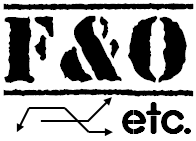|
|
How to Trade a Long Call Option? Explained with Example & Payoff Charts
Now, it is easy to find on internet and books many details which have all the graphs and charts and payoff functions, but one must also notice the pricing part. When you BUY something, you need to pay a price. The same holds true here also. When we go LONG a call option, we are BUYING a call option, so we need to PAY a price. This price is call Option Premium.
In the above payoff function, the price of the option is not taken into consideration. So, the pay off function is NOT correct practically. The reason is that this gives an impression that Buyer of the call option is at ZERO loss because the RED line does not go below the Horizontal axis or ZERO line at all. It gives an impression that if the underlying price ends below the strike price, the loss is maximum of ZERO, i.e. No loss at all.
However, the Long Call option position does not come for free. So for example, if you pay $2 for this call option, that is the price which should be reflected in this payoff function.

So, to include this price, since the buyer is PAYING a price of $2, the payoff function should be shifted DOWN, since payment is NEGATIVE. Hence, we get the realistic BLUE graph, which shows that in case the Underlying Price closes below the strike price on expiry date, the loss to the buyer will be $2, i.e. all the money he used to buy the Long Option Call Position will be lost. Hence, the following graph displays the payoff function shows the profit loss realistically.
Moreover, even if the underlying ends up above the strike price, there is still a region upto which the position will be in loss. Suppose the strike price is $50, the buyer will NOT be in profit until the unerlying closes above $52. At $52 also, it will be break-even point, i.e. no profit no-loss (assuming Zero Brokerage). If you consider the brokerage charges, stamp duties, etc. the realistic BLUE graph will shift further down, and the break even point will shift further rightwards. i.e. the underlying should move up further $53 or $54, to make this a profitable trade to the Buyer.
Here is a video tutorial for Video - Long Call Option Trading Explained with Example

0 Comments: Post your Comments
Wish you all profitable derivatives trading and investing activities with safety! = = Post a Comment